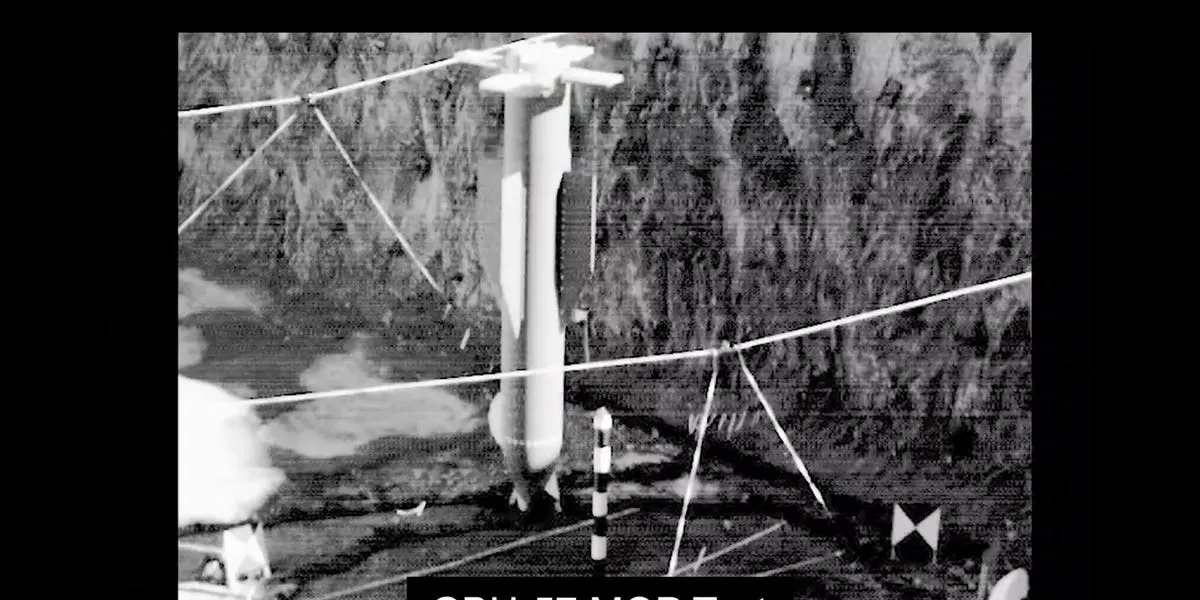
The recent deployment of 30,000-pound bunker-buster bombs against Iran's nuclear facilities has drawn considerable attention, particularly following comments made by General Dan Caine, the chairman of the Joint Chiefs of Staff. During a press conference at the Pentagon, General Caine revealed that these bombs were specifically developed to penetrate heavily fortified targets, underscoring the military's extensive research and preparation that spanned over a decade and a half.
General Caine provided insights into the development of the GBU-57 Massive Ordnance Penetrator (MOP), which is recognized as the largest non-nuclear bomb in the U.S. military's arsenal. He explained that during Operation Midnight Hammer, the U.S. Air Force deployed B-2 Spirit stealth bombers to drop a total of 14 MOPs—12 targeted at the Fordow enrichment facility and 2 at the Natanz site. This operation was not only highly classified but also years in the making.
In 2009, officers from the Defense Threat Reduction Agency (DTRA), which specializes in neutralizing deeply buried targets, identified a significant construction project at Fordow. General Caine emphasized that Fordow is a critical component of Tehran's covert nuclear weapons program. As the DTRA officers studied the site, they realized that existing U.S. weaponry was insufficient for an effective strike, which led to collaborations with defense industry giants like Boeing and Northrop Grumman to enhance the MOP's capabilities.
The MOP transitioned from a DTRA technology demonstration program to an integral part of the Air Force's Quick Reaction Capability Program in 2010. The bomb underwent extensive testing, where numerous full-scale munitions were dropped on realistic targets to ensure operational effectiveness. General Caine noted that the goal was to create a weapon that could be deployed against Fordow at a strategic time of the U.S. military’s choosing.
Just days before the conference, President Donald Trump authorized the B-2 bombers to strike Fordow. The GBU-57 MOP measures approximately 20.5 feet in length and has a diameter of 31.5 inches, with the warhead alone weighing around 6,000 pounds. This powerful bomb can penetrate facilities buried up to 200 feet deep, making it uniquely suited for such fortified sites. The B-2 stealth bombers are the only aircraft capable of carrying these massive bombs, allowing them to maintain stealth by storing two bombs internally.
According to General Caine, the MOP is composed of a combination of steel, explosives, and a fuse designed to optimize its impact within the target. Each bomb's specifications, including impact angles and fuse settings, were meticulously calculated to ensure precision. A longer fuse creates a delay, allowing the bomb to penetrate deeper before detonation.
Prior to the attack, Iran attempted to conceal the main exhaust shaft and ventilation openings at Fordow by covering them with concrete. General Caine recounted how the first MOP successfully removed the concrete cap, exposing the main shaft, while subsequent bombs penetrated the facility at speeds exceeding 1,000 feet per second, detonating within critical areas.
Interestingly, unlike traditional surface bombs, the MOP does not leave visible impact craters, as its design aims for deep penetration. Satellite imagery confirmed the points of penetration without significant surface damage. General Caine explained that the bombs operated as intended, utilizing a combination of blast and overpressure to devastate the internal structures of the Fordow facility.
The Trump administration heralded the strikes on Fordow, Natanz, and Isfahan—another facility targeted with Tomahawk cruise missiles—as a considerable success, claiming that Iran's nuclear capabilities had been significantly impeded. The Israeli Atomic Energy Commission echoed these sentiments, while Rafael Grossi, head of the United Nations nuclear watchdog, acknowledged substantial damage to Iran's nuclear infrastructure. However, he cautioned against using the term annihilation to describe the strikes and highlighted uncertainty regarding the whereabouts of Iran's stockpile of highly enriched uranium, which is essential for nuclear weaponization.
As geopolitical tensions continue, the implications of these military actions remain significant, with ongoing scrutiny of Iran's nuclear ambitions and the international community's response.